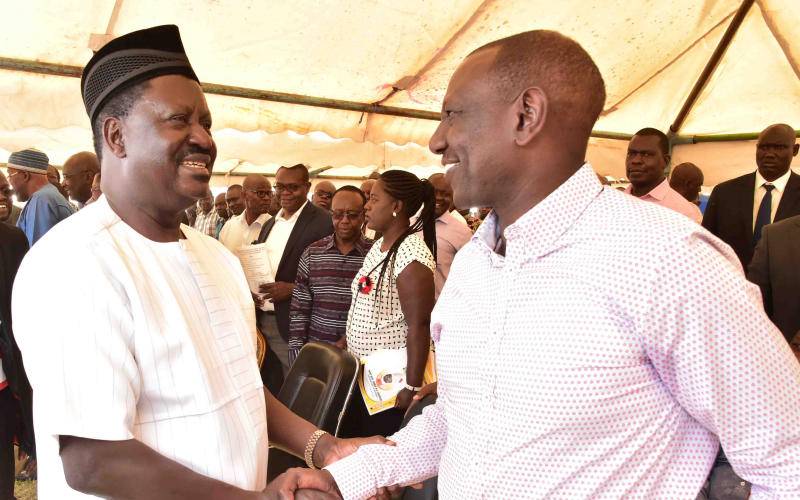×
The Standard e-Paper
Join Thousands Daily

Deputy President William Ruto and former Prime Minister Raila Odinga during the installation of Most Reverend Philip Anyolo as the Archbishop of Kisumu Catholic Archdiocese.[DPPS, Standard]
ODM leader Raila Odinga and Deputy President William Ruto are going head to head on campaign strategies as the race for 2022 narrows down to a matter of months.